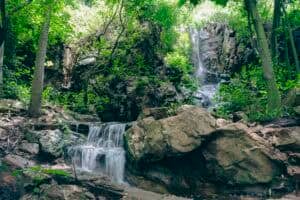The SA National Roads Agency has undertaken to give back what it took away from nature along roads, out of respect for the environment and communities.

The state-owned road agency said as it interacted with nature as part of its routine work of road construction, at times it had to cut down trees along the roads when doing road improvements and construction. The company acknowledged that this process at times was less pleasant.
Sanral said it had adopted an approach to say “the land belongs to all who dwell on it, and we should all strive to give back what we take from it” in all its construction projects.
The agency was reacting to the recent public criticism after it cut down trees along the R21 road on the way to OR Tambo International Airport in Ekurhuleni. Residents accused Sanral of being inconsiderate to the environment.
Sanral’s general manager of communication, Vusi Mona, today said the agency removed the trees in the area for a good reason. According to Mona they had to resort to cutting down the trees because the pine needles continuously blocked grind inlets, which led to flooding of the road.
“Sanral did not stop there, it replaced the pine trees with Karee, which will not block any inlets. This is the way the agency works, as can be seen in thee the relocation of Baobab trees near Musina during the upgrading of the N1. Eleven Baobabs and 197 Shepherd trees were relocated,” he said.
Mona said the agency always strove to meet the requirements as set out in Environmental Management Plan (EMP) per project.
“The agency is committed to preserving the environment and the crucial role that trees play in this,” Mona said.
He cited the 2015 case when trees along the R511 at the Hartbeespoort Dam had to be removed, saying this was done to improve the safety of road users.
In that instance, the agency obtained a permit from the Department of Forestry and Fisheries in Mmabatho, North West to remove these trees. Many of the trees were either obstructing sight distances, were too close to the side of road or too close to structures such as concrete-lined side drains and bridges.
“We are always considerate of the environment when building roads; whether it’s removing indigenous plants on a planned road reserve, managing stray animals crossing the road or digging up rocks and sand for construction. We have an EMP for every project and it guides us to minimise or avoid adverse environmental impact,” he said.
For more news your way, follow The Citizen on Facebook and Twitter.






